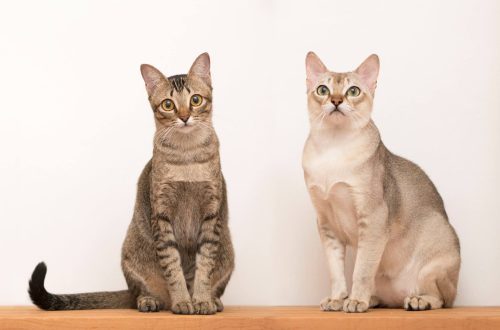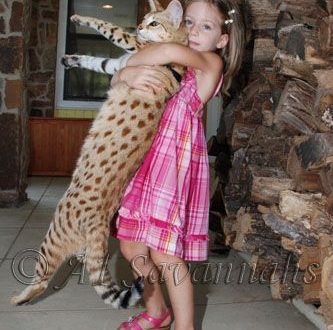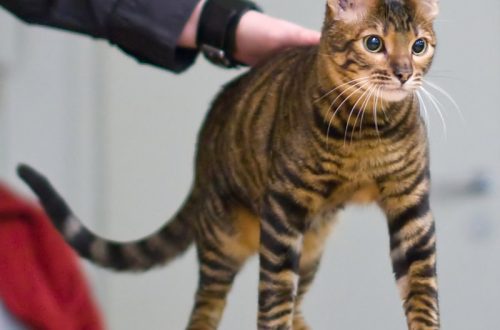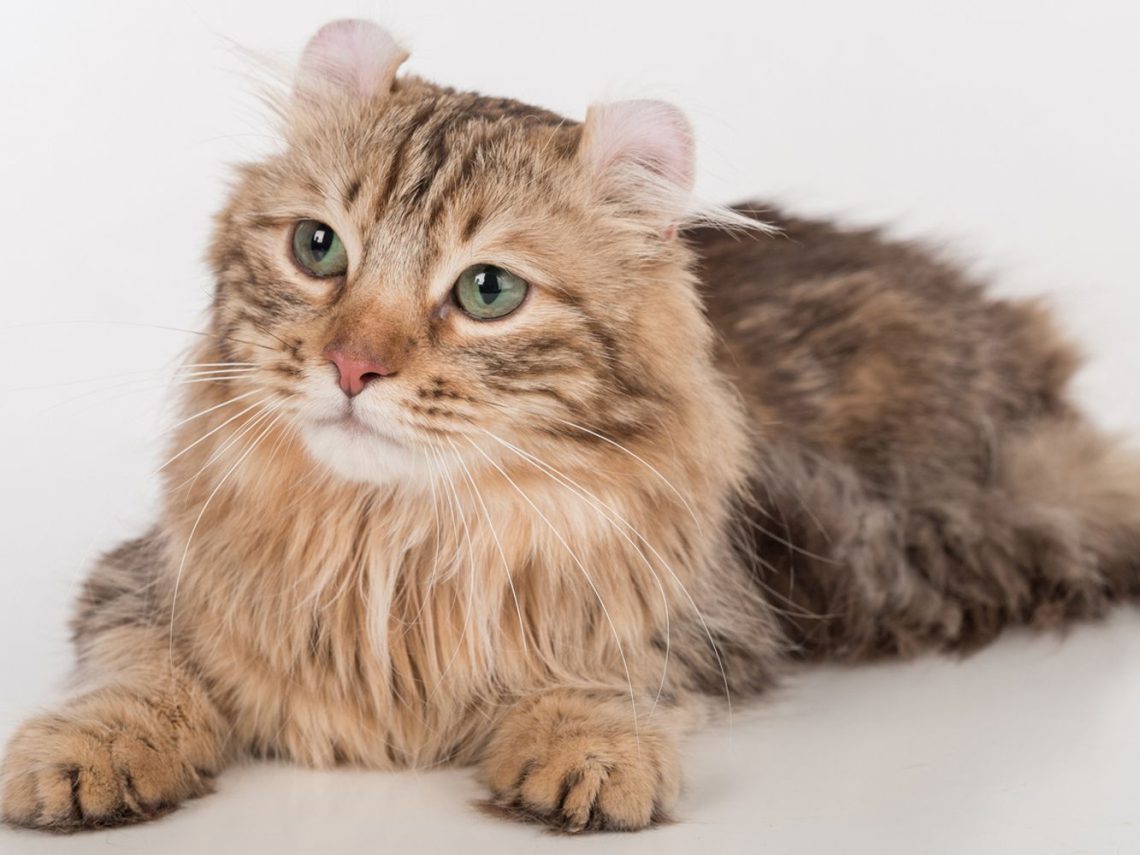
Curl Amerika
The American Curl is a breed of affectionate companion cats with backward-curled ears, bred in the United States in the 1980s.
Paragraf
- Characteristics of American Curl
- Wayahe dhasar
- Sajarah Amérika Curl
- Video: American Curl
- American Curl breed standard
- American Curl photo
- Character of the American Curl
- Pendidikan lan pelatihan
- Pangopènan lan perawatan
- American Curl health and disease
- Carane milih anak kucing
- American Curl kittens
- American curl price
Characteristics of American Curl
| Negara asal | USA |
| Jenis wol | Shorthair and longhair |
| Dhuwur | 28-33 cm |
| bobot | 3-7 kg |
| Age | 15 taun |
Wayahe dhasar
- The American Curl exists in two separate types – shorthair and semi-longhair (in the FIFe system it is positioned as longhair). Despite the fact that the standard considers both varieties to be equal, breeders around the world continue to favor semi-longhaired Curls as more glamorous and photogenic pets.
- The genetic mutation responsible for the shape and position of the ear cartilage does not adversely affect animal health. Moreover, American Curls have unexpectedly strong immunity for purebred cats.
- American Curls are pets with a fine mental organization, loving people more than other cats. They are unobtrusive and do not make deafening “oratorios” if they are hungry or disagree with something.
- The breed is distinguished by a high level of intelligence and trainability (as far as a cat can be trained at all).
- American Curls have a peaceful nature, which helps them to share housing with other cats and even dogs. In addition, they are very supportive of children.
- Curl’s playful paws masterfully open kitchen cabinets and press door latches until they switch to the desired position for the cat.
- Adult kitties retain playfulness and childish spontaneity into old age, for which they are called cats with the character of Peter Pan.
- Thin, like curlers, the American Curl’s ears have harder cartilage than the ears of ordinary cats and are easily injured. In general, get ready to explain to the guests for a long time and convincingly why you do not allow petting your cat on the head.
- American Curl kittens are born with straight ears, which begin to curl only on the 3-10th day of life. The degree of cartilage curl in this case can be different: from the minimum to a miniature “roll”.
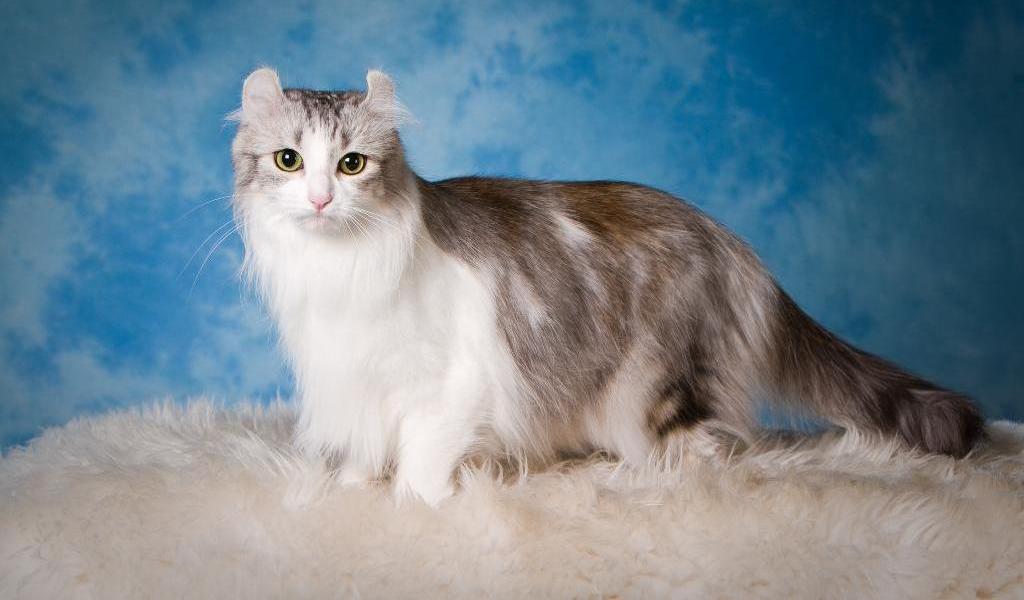
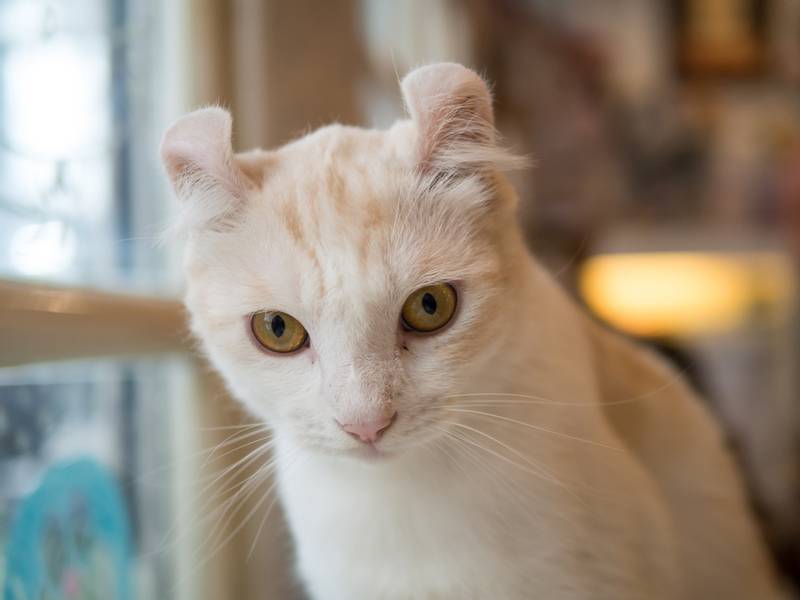
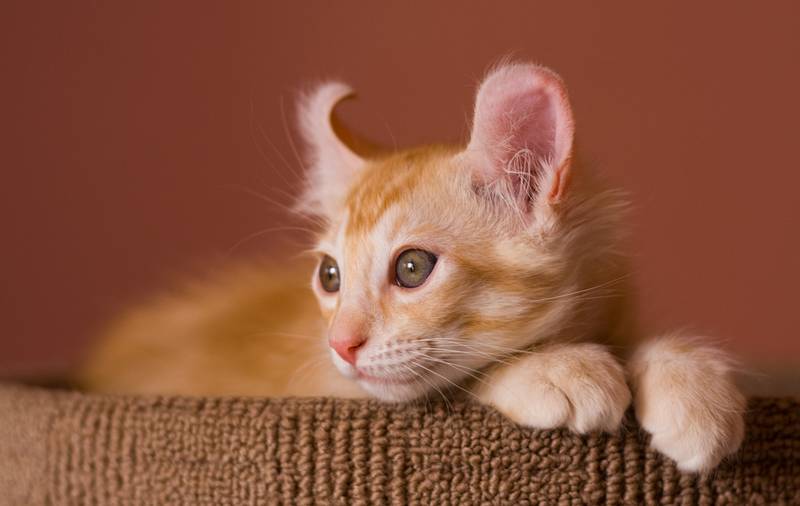
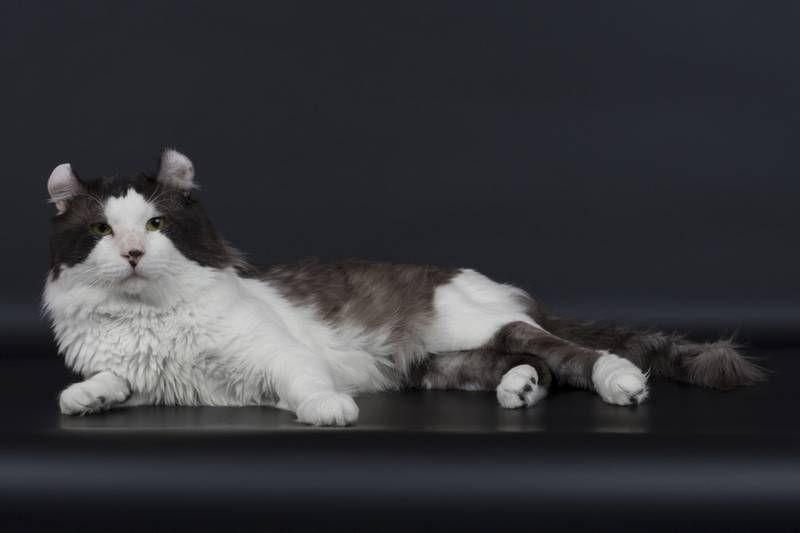
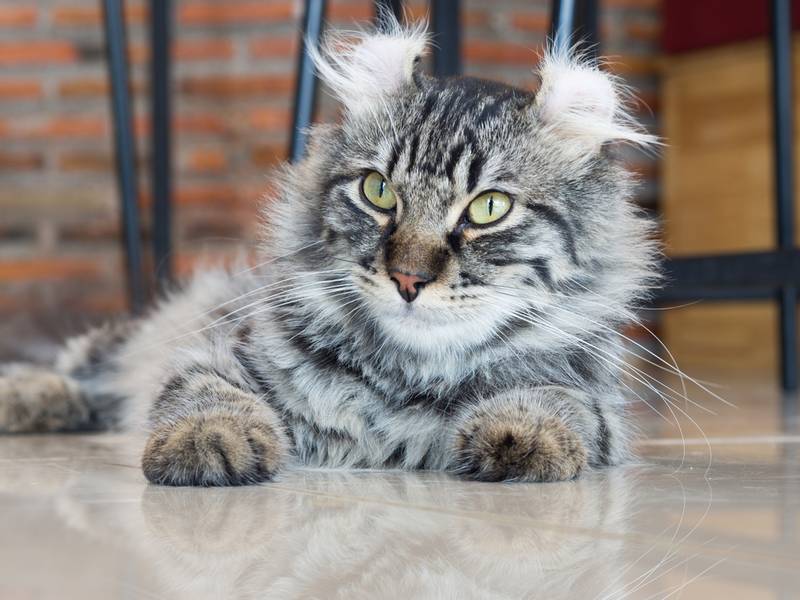
American Curls are affectionate, affable intellectuals, remembered for their extraordinary image and a fantastic sense of affection for a person. Moderately balanced, but far from phlegmatic, they masterfully break any stereotypes regarding the feline tribe. Independence, stubborn unwillingness to share the territory and the owner with other pets, a passion for solitude – all this is absolutely not about Curls, who consider such habits to be the height of bad manners. It would not be an exaggeration to say that this is one of the most positive breeds, whose representatives are desperately unwilling to grow up, therefore, in their advanced ten years, “arc-eared” cats are as frisky and easy-going as in their youth.
Sajarah Amérika Curl
All modern American Curls have a common ancestor – the cat Shulamith, picked up on the street in 1981 by a couple named Ruga. The spouses were pleasantly amused by the arched, as if turned inside out, ears of a mongrel kitty. But since the newly-made owners were far from felinological subtleties, they were in no hurry to show the animal to specialists. In the same 1981, Shulamith acquired offspring. The father of a whole brood of purring fluffies was a purebred and unknown cat. Nevertheless, almost all kittens born from him inherited the curled ears of their mother.
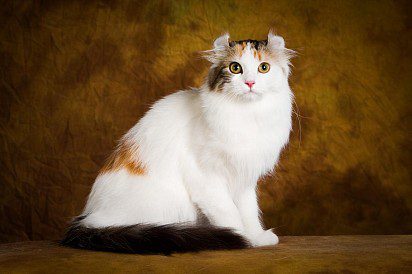
Joe and Grace Ruga were not ambitious, so at first they simply distributed the Shulamith babies to friends. However, in 1983, the couple nevertheless turned with their wards to a geneticist, who established that the elegant “curly” ears of a cat are the result of a genetic mutation. Moreover, the gene responsible for this feature turned out to be dominant. This allowed Shulamith to enter into relationships with cats of any breed, producing babies with the same ear shape as her own. In the same year, Rug’s wards appeared at one of the cat shows held in California, which was a good PR for them.
The American Curl breed received official recognition from TICA quite quickly – in 1987. At the same time, only semi-longhair cats were granted the “privilege”. Shorthair Curls languished in anticipation until 1991, when the felinological organization finally decided to standardize them. It is worth noting, however, that the CFA recognized animals both in the shorthair and longhair types, while the ACA and ACFA did the same only in 1993-1994.
On a note: despite the fact that it is not accepted to challenge the right of Shulamith to the status of the founder of the American Curl breed, it is worth clarifying that she was far from the only cat with such a mutation. Beginning in the 60s of the XX century, farmers in Oklahoma and California periodically encountered kitties that had an unusual break in the ear lining, as evidenced by news reports of those years.
Video: American Curl
American Curl breed standard
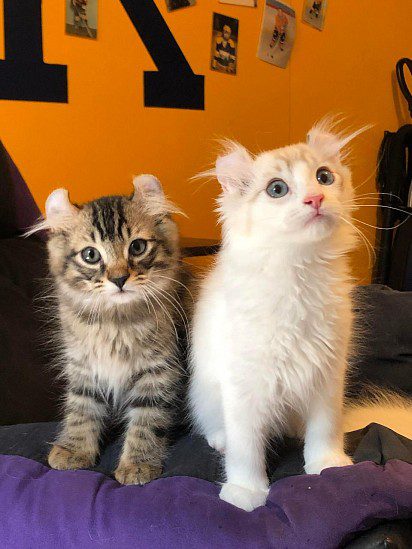

If in the story with the cat Matroskin, whiskers, paws and a tail acted as identity documents, then in the case of curls, ears alone are enough. Large, though not devoid of grace, “locators” of cats from the New World form a noble curve, thanks to which it seems that the animal is constantly listening to something.
Lowongan
American Curls have wedge-shaped heads with soft, smooth transitions. The nose of the representatives of this breed is moderately long, the chin is strong, well-defined.
cokotan
Curls are characterized by a straight or scissor bite.
Eyes
The large, obliquely set eyes of cats are in the form of an elongated oval, commonly referred to as a “walnut”. The eye color of American Curls is not tied to coat color and can be anything. An exception to the rule is individuals with color-pointed “fur coats”, in which the shade of the iris should be bright blue.
Telpon
The wide and large ears of the American Curl are curved back and have a thin, rounded tip. According to the requirements of the standard, the angle of inversion of the ear cartilage must be at least 90°, but not more than 180°.
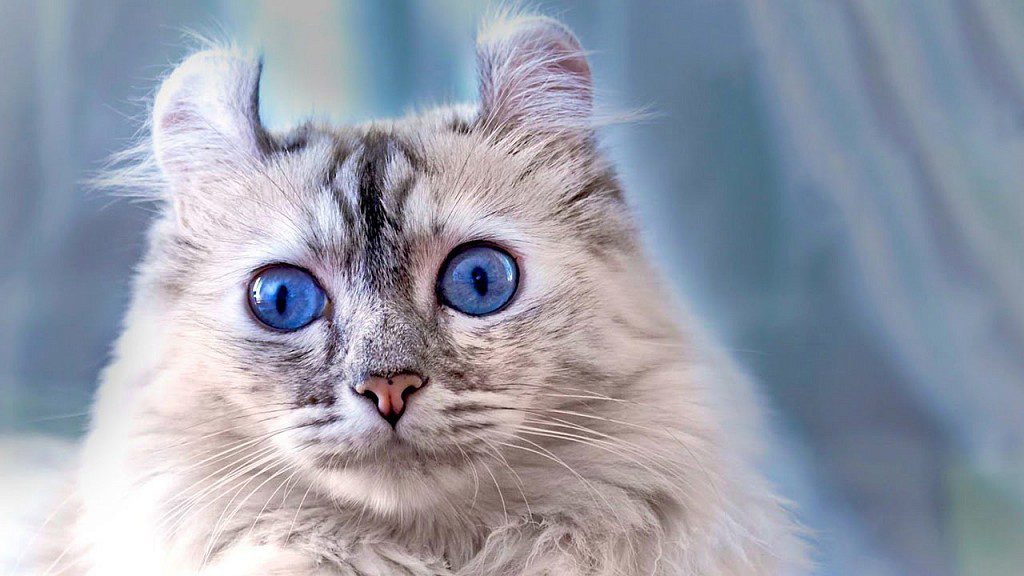

pigura
American Curls are distinguished by their plump yet elegant silhouette. The body of cats is flexible, rectangular in shape, somewhat stretched, but rather muscular.
perangan awak
The legs of the American Curl are straight and of medium length. Paws are rounded, collected in plump “lumps”.
Buntut
The tail of the American Curl is equal to the length of its body. In pedigree cats, the tail is thick at the base, noticeably “thinning” as it approaches the thin, pointed tip.
Wool
The representatives of the long-haired variety of the breed have an airy, semi-adhering type of hair, with a minimum amount of undercoat and protective hair. The area of the neck and tail of the cats are especially richly pubescent. The “outfit” of shorthaired curls is less voluminous. They, like long-haired individuals, have practically no undercoat, but the coat itself is more elastic, smooth.
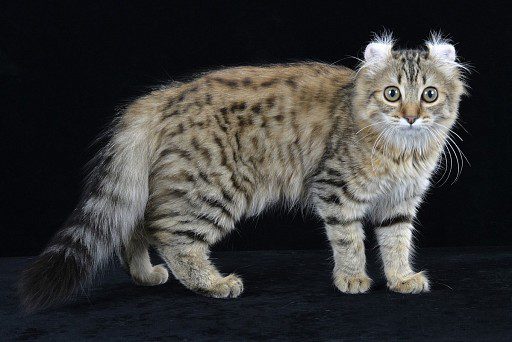

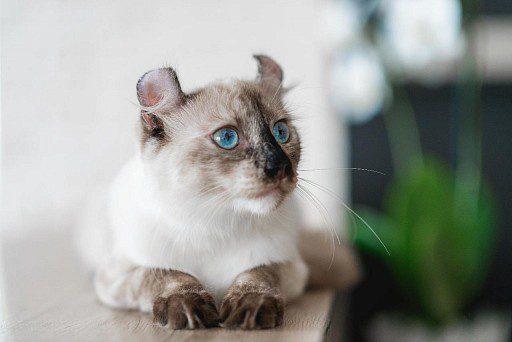

Werna
In terms of colors, almost everything is allowed for American Curls. Solid, Siamese, tabby, tortie, color-point and bicolor – made in USA curls can have any of the colors, sometimes quite unexpected.
Faults lan disqualifying vices
At exhibitions, Curls can qualify for a rating of no higher than “good” if they have the following anatomical deviations:
- set low, too steeply kinked and directed anywhere but backwards, ears;
- nose with a noticeable stop;
- too rough or, conversely, the cottony structure of the undercoat.
Individuals with too large an angle of the ear cartilage fracture are not allowed to participate in exhibition events: when the tip of the ear touches the head. The same fate awaits Curls with too thick ear lining, deformed cartilage (the so-called “corrugated ears”) and kinks in the tail.
American Curl photo
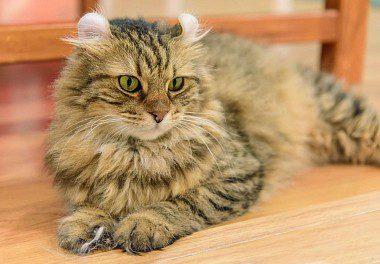

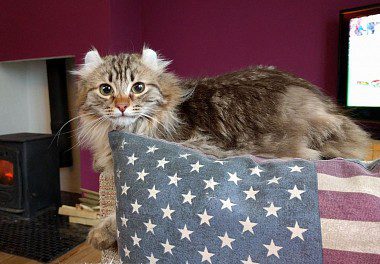

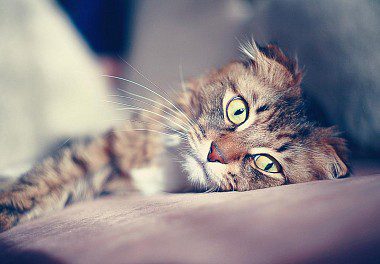

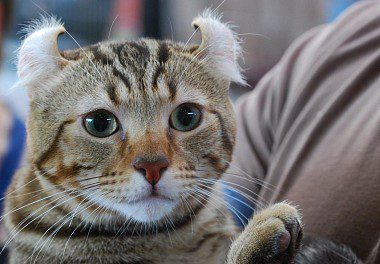

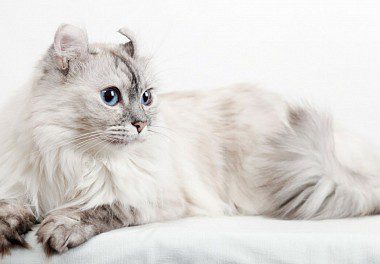

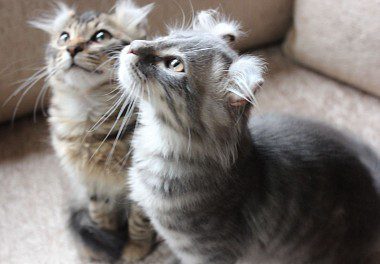

Character of the American Curl
American Curls are the sweetest creatures with an extraordinary appearance and angelic character, which you just want to cuddle in your arms. Unlike most other representatives of the purring brethren, they are completely devoid of arrogance and militant independence and are truly attached to a person. To get along with the American Curl, you do not have to take any special actions. This eared loves the owner by default, but in turn expects the same manifestation of feelings from him. Most American Curls are sociable, curious cats who prefer to spend their leisure time in the company of a person. They will willingly sit with you on the Internet, adjusting the movements of a computer mouse with a fluffy paw, help you tie (or untie) another napkin, or simply lie on the sofa at your feet.
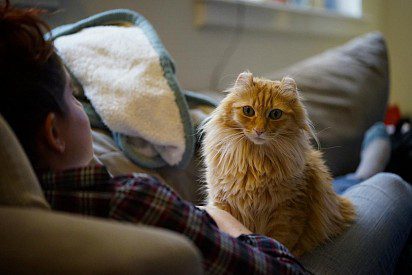

The American Curl is one of the cat breeds that does not cope well with loneliness. Yes, a cat is able to entertain itself, but communication with a person cannot be replaced by a mountain of sweets in a bowl, or the most expensive gaming complexes. So before you get a “bow-eared” cat, think carefully about whether it will fit into your work schedule. The poise and natural calmness of American Curls allows them, if not to be friends with other domestic animals, then at least not to conflict. It is hard to imagine what such a terrible thing must happen to make these good-natured purrs release their claws and hiss threateningly at a dog or cat living with them in the same house. But with small animals, kitties, as a rule, do not stand on ceremony. Hunting instinct – nothing can be done.
Another distinguishing feature of the character of the American Curl is the ability to painlessly adapt to the changing conditions of the surrounding reality. These cats adapt quickly and endure moving and travel relatively easily. Curls and sound effects are not annoying, so if you throw a Friday party in your own apartment, the cat will not only not be scared, but will also try to take an active part in the festive event. The American Curl will also easily find an approach to the guests who have appeared on the threshold of the house, demonstrating their own location with a quiet purr and cutting circles at the feet of the “alien”.
Pendidikan lan pelatihan
American Curls have a certain “dog-like” character. In other words, this is the breed that can be brought up “by itself” and even taught some tricks. The main thing is not to make excessive demands on the mustachioed good man, because he is just a cat and in general – he has paws. However, to learn individual dog commands, such as “Come!” or “No!”, kitties are able.
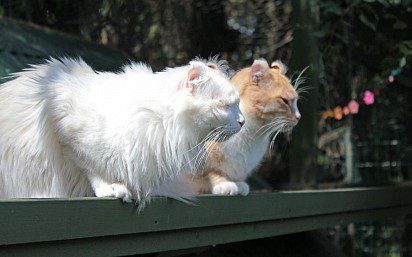

When training an American Curl, it is necessary to take into account the peculiarities of the psyche of cats in general. So, for example, never repeat a command several times or modify it. The animal simply will not understand you if today you order him to “Sit!”, And tomorrow you simply invite him to “Sit down!”. Commands should be given in a soft but persuasive tone. Remember, cats are not dogs and will not be pushed around. Forgo negative reinforcement in favor of positive reinforcement: give the American Curl treats even when he hasn’t done his job and be sure to praise him. And of course, do not delay the education: the older the Curl gets, the more difficult it is to convince him of the need for training. Yes, he can be the universal cutie and the most good-natured pet in the world, but this will not stop him from taking time off from classes and turning on the “invisible” mode.
Pangopènan lan perawatan
The American Curl will need the same “wealth” as any other cat. In particular, for a purr, you will have to purchase a couch or a house, toys, bowls for food and drink, a carrier, a tray, and a harness for walking. The house will also have to be put in order before moving the kitten. Remove any small items from the floor that the baby wants to taste, securely hide household chemicals, shoes and wires from household appliances.
Up to a year, American Curl kittens suffer from excessive curiosity, which drives them to the windowsills, to the open windows, to the drums of washing machines, ovens and trash cans, so at first it is better to carefully monitor the movements of the mustachioed bespredelnik around the apartment. You can take an American Curl kitten outside no earlier than 2.5-3 months, and then only if the animal is vaccinated and dewormed. Adult cats are walked twice a day on a harness. The breed is considered active and playful, it needs constant fresh impressions, which can only be obtained outside the apartment, respectively, it is wiser not to neglect the daily walking of a pet.
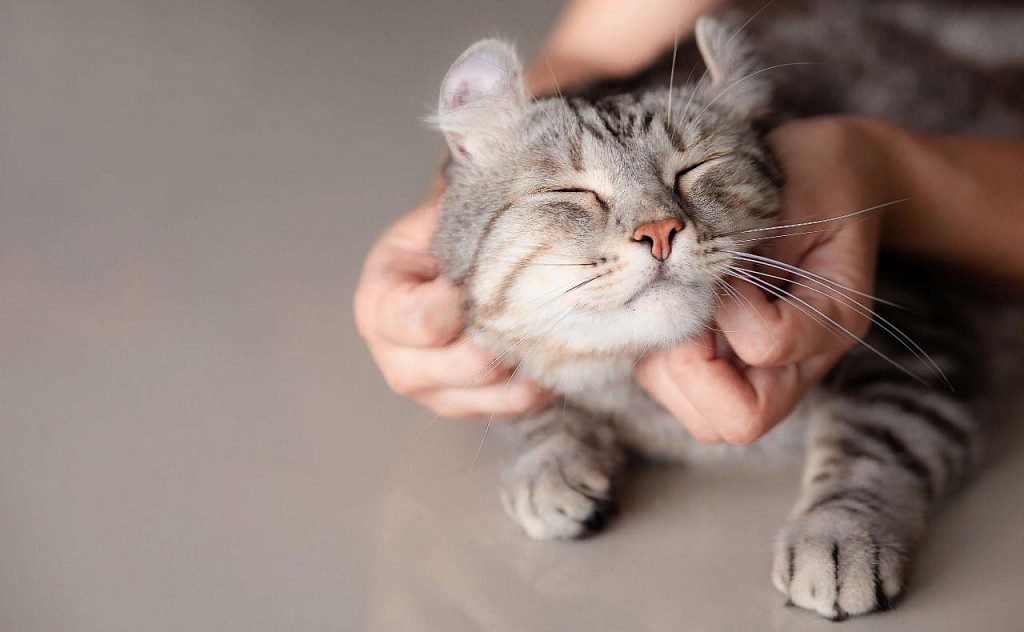

Rub me completely
Hygiene
The coat of American Curls does not fall off and almost does not tangle, so a simple combing with a fine comb and a stimulating massage with a natural bristle brush is enough for it. Both shorthaired and semi-longhaired individuals are combed using the same set of tools, but with different frequencies. In particular, it is recommended to comb the “fur coats” of short-haired curls with a comb once every 7-10 days, long-haired curls – twice a week. American Curls shed seasonally and during such periods it is better to increase the number of combing: it is useful for the pet, and there is less wool in the apartment. Sometimes a slicker is used to remove the dead undercoat, which is insignificant in the breed.
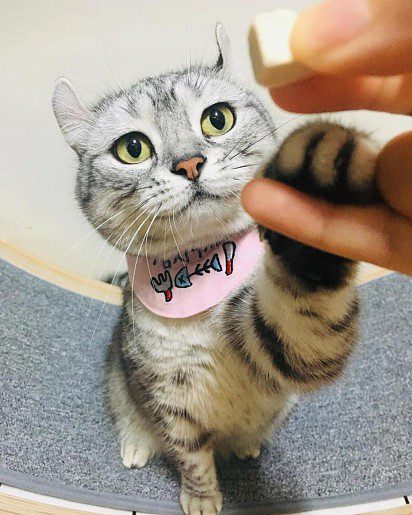

Bathing is better not to abuse: two or three times a year is enough for the American Curl. They wash the purr with a zoo shampoo, which is better to choose with a cat cosmetics consultant. To give the coat a pleasant shine and facilitate combing, it is advisable to use a conditioner. Dry short-haired Curls with a cotton towel, long-haired ones with a hair dryer. In between baths, cats can be dry-cleaned, for which it is worth buying powder and powder shampoos.
Cleaning the ears of American Curls is also necessary, but due to the unusual structure of the ear funnels, this should be done with extreme caution. The ear cartilage in kitties is dense and breaks easily if you press hard on it. Usually the ears of American Curls do not produce much secretion, which looks like a dry dark coating, which is recommended to be cleaned once a month. Eyes are best examined daily. Representatives of this breed do not suffer from excessive lacrimation, but the paths and lumps in the corners of the eyelids, of course, do not decorate the animal. So in the morning, wipe the corners of the Curl’s eyes with a damp cloth.
It is best to brush your teeth every couple of weeks. To do this, you will have to stock up on a cleaning compound from a veterinary pharmacy and a cat’s toothbrush. If for some reason such things are not available, you can limit yourself to a piece of gauze wound around your finger and baking soda. Even if the Curl has ten scratching posts hanging throughout the apartment, it is still necessary to cut his “scratches” because they often grow into the pads in representatives of this breed. The only point: if you do not have experience in cutting nails as such, it is advisable to read the step-by-step instructions before the procedure, otherwise you risk hitting a blood vessel in the claw and injuring your pet.
Dipakani
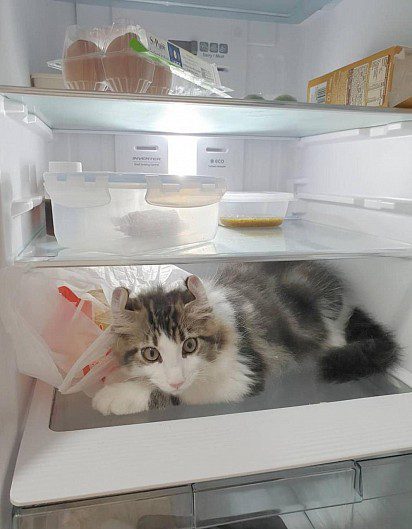

American Curls have an enthusiastic and reverent attitude towards food. Purrs with “twisted” ears love to stuff their bellies, and sometimes with things that do not suit them at all. Do not be fooled by the begging looks of your pet and do not put a spoonful of roast or a piece of pie in his bowl. Firstly, because the food from the table is unlikely to be appreciated by the cat’s digestive system. And secondly, because such indulgences undermine your authority in the eyes of the animal.
American Curls should have their own “kitchen”, which is based on either super-premium quality “drying” or natural products. Moreover, in the second case, you will have to rely on lean meat (poultry, lamb, beef) and offal. Once a week, you can treat the mustachioed gourmet with pork or beef cartilage (no fish or chicken bones). As additives to the main diet, oatmeal and rice porridge cooked in broth, fat-free kefir, fermented baked milk and cottage cheese are suitable. American Curls are given vegetables only boiled or stewed. These are mainly carrots, pumpkin, zucchini and beets. And of course, do not forget about vitamin supplements with calcium, which help balance the pet’s natural diet.
How to feed the American Curl
Up to 6 months, kittens should eat 4-5 times a day. Six-month-old teenagers are fed 4 times and so on for up to a year. Starting from 12 months, the American Curl eats three times a day, since the transition to two meals a day is carried out no earlier than one and a half years.
American Curl health and disease
American Curls are cats with excellent health, so their owner does not have to systematically be on duty at the door of the veterinary office. The gene for the twisted shape of the ear cartilage did not affect the physical endurance and immunity of the breed; as a result, the animal’s body practically does not succumb to viral infections. As for other, non-hereditary ailments, Curls are subject to them to the same extent as other breeds.
Carane milih anak kucing
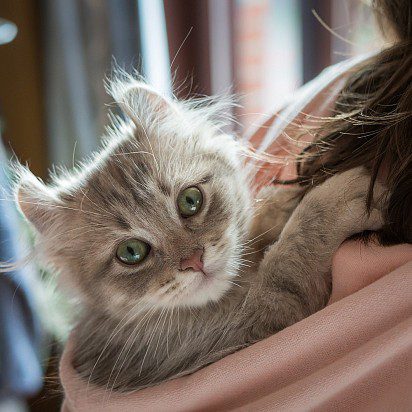

- Even in litters of eminent curls with championship diplomas, babies with straight ears can “slip through”. And if a breeder shows you a flock of cats, in which straight-eared cats run along with “bow-eared” purrs, this is not a reason to suspect the cattery and its owners of all mortal sins.
- American Curl kittens rarely inherit a parental degree of ear curl. Accordingly, if, when meeting a cat mother, you find that her ears are not so twisted, this does not mean that her offspring will have a similar feature.
- It is more reasonable to take American Curl kittens at the age of 2.5-3 months. A rather late date is explained by the fact that during the first weeks of life, the ear cartilage of babies is unstable and often changes the angle of inversion.
- Selecting a kitten with the highest possible curl of the ear in order to secure access to exhibitions in the future is an unnecessary safety net. This parameter has absolutely no effect on the show karma of the American Curl: individuals with a slight cartilage bend (but not less than 90°) often become champions.
- Check that the selected kitten has the necessary documents (metrics, veterinary passport), as well as the presence of an electronic chip on his body.
American Curl kittens
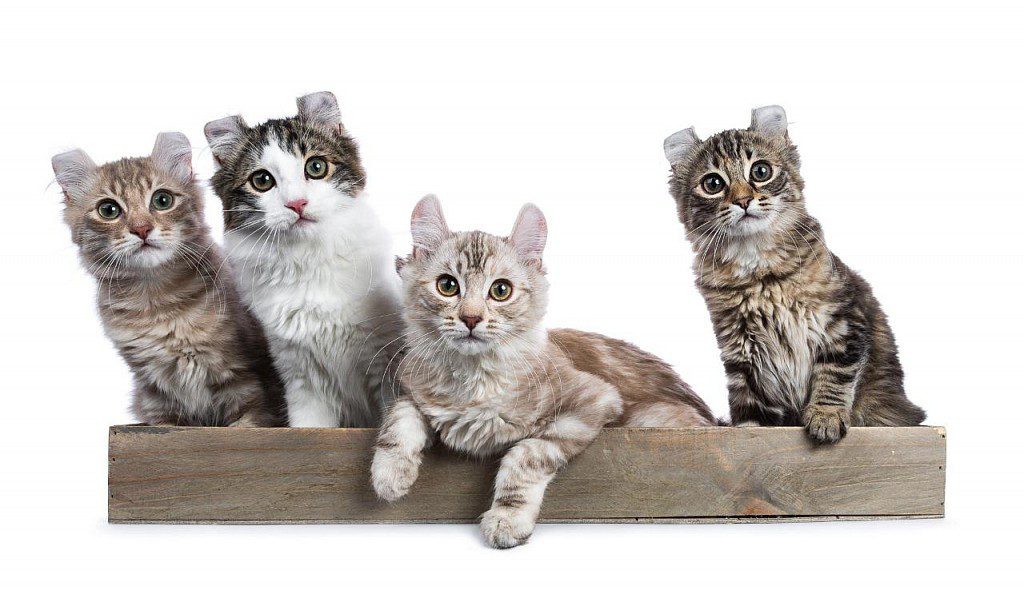

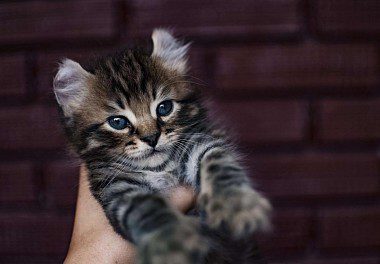

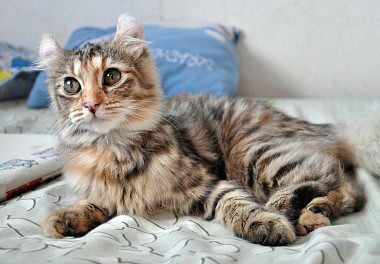

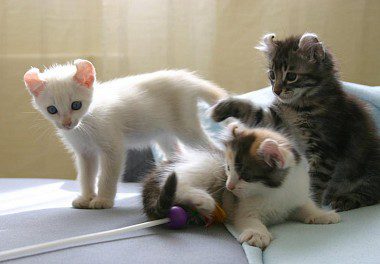

American curl price
Prices for American Curls with pedigrees start at about 400$ rubles and end at around 800$. A higher price tag is usually set on individuals with show potential, as well as on animals of rare colors such as golden chinchilla, red and chocolate van.





